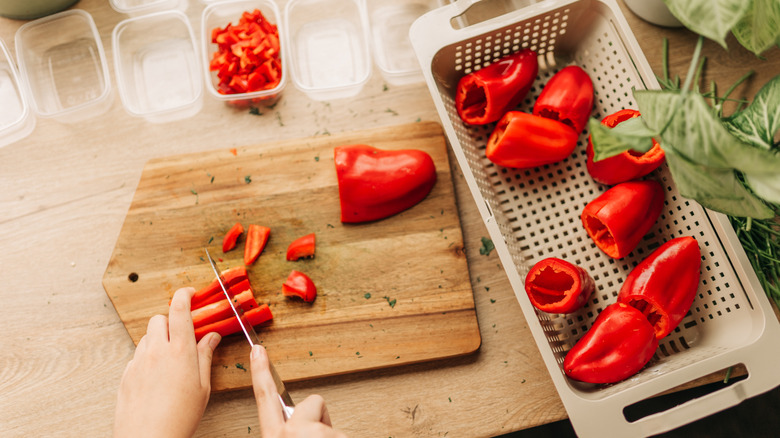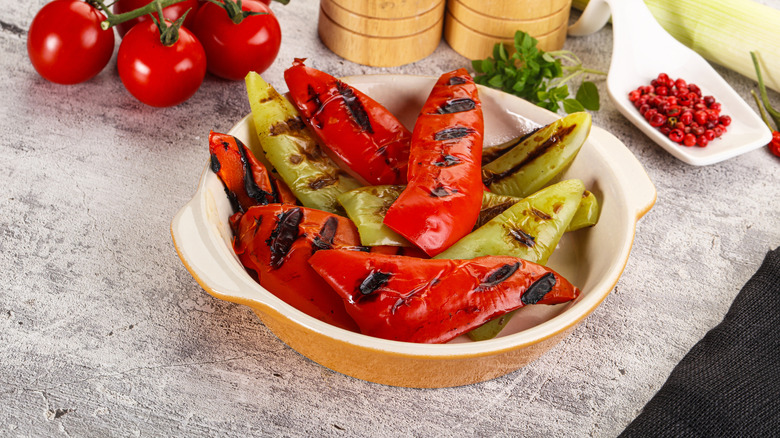How To Slice Bell Peppers For Even And Flavorful Grilling
If you're only using your grill to cook skirt steak and other meats, you're not living to your fullest potential. Many veggies can stand up to the char of your grill, and bell peppers are an absolute delight when prepared over hot grates. But before you bust out your knife and start chopping, you should know how to slice them properly so that, when placed directly on the grill, they won't fall through into the fiery pits below. Food Republic spoke with Nicole Johnson, owner, photographer, and recipe developer at Or Whatever You Do, about her take.
"Slice bell peppers into wide, flat panels by cutting off the top and bottom, standing the pepper upright, and slicing down one side to open it up," she instructed. After that, she recommends running your knife along the inside — holding the blade slightly parallel to the interior of the pepper — to remove the ribs and seeds, then cutting the pepper into "three or four large slabs."
"These flat pieces sit well on the grill and won't fall through the grates like thin strips will," Johnson explained. She also told us that if you're after smaller pieces for a recipe (like if you're making fajita veggies), you should grill the slabs first and cut them down afterward, so they're easier to handle once they're softened and charred.
The best way to grill your bell pepper slabs
You might be thinking you'll just cut your bell peppers into smaller pieces and then grill them using a cast-iron flat top griddle or pan. And that's fine — you can — but you won't achieve quite the same effect as grilling them in large pieces directly over the flames, and you'll miss out on char.
"The cut [of the pepper] controls surface area, which is key for caramelization," Nicole Johnson explained. "Larger flat surfaces (like slabs or thick strips) have more direct contact with the grates, which means better char and deeper grill marks." Smaller pieces, on the other hand, run the risk of simply steaming or even falling into the flames.
But what also matters is how you cook them. "Flavor also depends on where you place the peppers on the grill," said Johnson. She instructed us that direct heat gives you the blistered skin and smoky edges that provide some contrasting texture, while indirect heat cooks them through without burning. "Timing finishes the job," she said, before reminding us not to leave the peppers on the grill too long either way, because they'll turn to mush.


